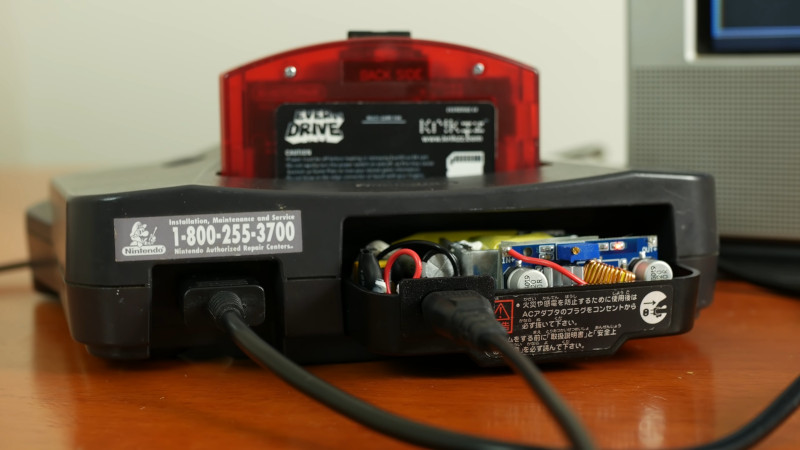Modern electronics such as phone and laptop chargers are pretty versatile no matter where you find yourself in the world. Capable of running off anything from 100-250V, all you need is a socket adaptor and you’re good to go. Video game consoles of the 1990s weren’t so flexible however. [MattKC] was tired of messing around with step down transformers to run his US market N64, and decided to rectify this, building a universal adapter to run the console instead.
It’s a proper hacked build, assembled out of a jumble of old parts. An broken N64 power adapter was harvested for its case and unique DC plug, which carries 12V and 3.3V to the console. Few compact power supplies exist delivering this pair of voltages, so [MattKC] got creative. An old router was sourced for its 12V 2A supply, and was combined with a 3.3V buck converter to supply both rails. With some creative bodging and plenty of mounting tape, the supplies were crammed inside the original case and wired up to the original jack and a figure 8 cable, allowing easy socket changes in different countries without the use of ugly adapters.
While few of us routinely travel with 25 year old Nintendo consoles, for those that do, the convenience of a single universal supply can’t be overstated. Fitting a step-down transformer into carry-on luggage simply isn’t practical, after all. We’ve featured similar hacks as far back as 2006, or more recently, a project seeking to rebuild a new PSU for the venerable Amiga 500. Video after the break.















I had to buy a new powerbrick for my Wii U when I moved from Sweden to Japan and that was five years ago.. .
similarily my N64 power brick died after 20 years of use.
I bought a third party one for peanuts but they had omitted the safety capacity of all things.
I added that back and a small load to one of the rails which rode high when unconnected – no idea if this is usual in n64 power supply.
All fitted back inoriginal case which is nice.
Before that I’d used a cheap ATX PSU but found it bulky. It would have been useful if I’d had other uses for it e.g. running entertainment centre fans and sensors.
This sort of thing would be great for power tool recharges. You could start with the 12v car version and adapt it.
Huh. I was expecting a demonstration of their power supply working on the different mains voltage standards after completion.
For those unaware… this flexibility is thanks to the almost universal adoption of the flyback topology switching supply.
This architecture starts by converting the incoming AC to DC with a bridge rectifier and a capacitor. That DC is pulsed through the primary coil of a small transformer and a lower voltage comes out of the secondary, which is rectified and filtered. Feedback to PWM the pulsing on the primary is (often) optically coupled to preserve galvanic isolation.
The rectification of the incoming AC results in the supply being frequency agnostic (indeed, you can just feed them DC within a certain range as well), and with a suitably wide range of duty cycle for the primary side pulsing you can work with a wide range of input voltages as well as output current capacity.
You would never get on a plane with that today . Never